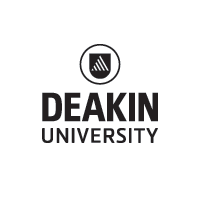Introduction
This topic explores the key concepts of chemical substances as they relate to:
- materials and society
- matter
- atomic structure and the periodic table
- bonding
- ionic bonding
- metallic bonding
- covalent bonding
- plastics and fibres.
Key concepts of chemical substances
The activities in this topic are designed to explore the following key concepts:
- A chemical is a substance that is either naturally occurring or manufactured by humans.
- Objects that take up space and have mass are called ‘matter’.
- Matter can exist in one of four states: solid, liquid, gas or plasma.
- Substances can have a range of physical properties, including colour, density, electrical conductivity, hardness and flexibility.
- Substances have chemical properties that enable them to react chemically with other substances to form new substances.
- Matter consists of tiny particles called ‘atoms’.
- Atoms can bond with other atoms to form molecules or lattice structures.
- The temperature of a substance is related to the average kinetic energy of the particles that make up the substance.
- In general, atoms achieve a stable state by losing, gaining or sharing electrons to form chemical bonds with other atoms.
- All chemical bonds are electrostatic in nature.
Key concepts associated with atomic structure and the periodic table are listed in the sections ‘Atomic structure and the periodic table’ and ‘Bonding’ in this topic.
Students’ alternative conceptions of chemical substances
Research into students’ ideas about this topic has identified the following non-scientific conceptions:
- Heating a substance always means raising its temperature.
- A conductor is something that keeps things warm.
- Substances that insulate hot objects won’t insulate cold objects.
- Metals attract cold better than wooden objects do.
- Melting and dissolving are the same process.
- Bubbles in boiling water consist of air.
- Bubbles in boiling water consist of hydrogen and oxygen.
- Vapour is different from water.
- Heat is something physical.
- The space between atoms contains air.
- Copper atoms have the same properties as bulk copper. For example, copper atoms can melt.
- Gold atoms are gold in colour.
- Atoms are hard, like billiard balls.
- Atoms have electrons circling them like planets around a star.
- Atoms are like cells with a membrane and nucleus.
- Atoms can reproduce after the nuclei divide.
- There is only one correct model of the atom.
- The nucleus attracts all electrons around it equally.
- Molecules are glued together.
- Chemical bonds store energy.
- Atoms form bonds in order to satisfy the octet rule.
- Electron pairs are equally shared in all covalent bonds.
- Atoms can be seen with a microscope or an electron microscope.
- Molecules of solids are hard; molecules of gases are soft.
- Molecules of solids are bigger than molecules of gases.
